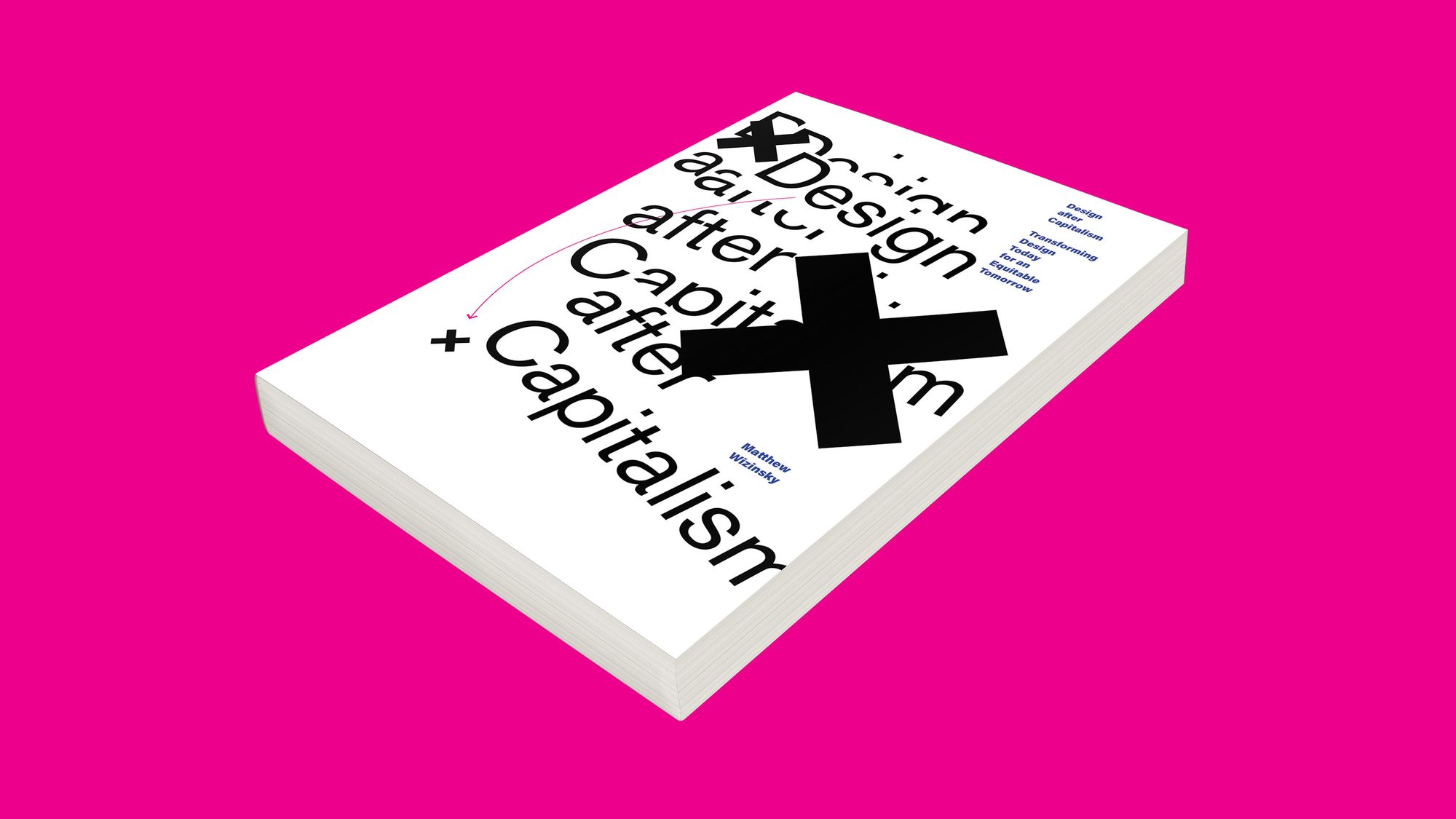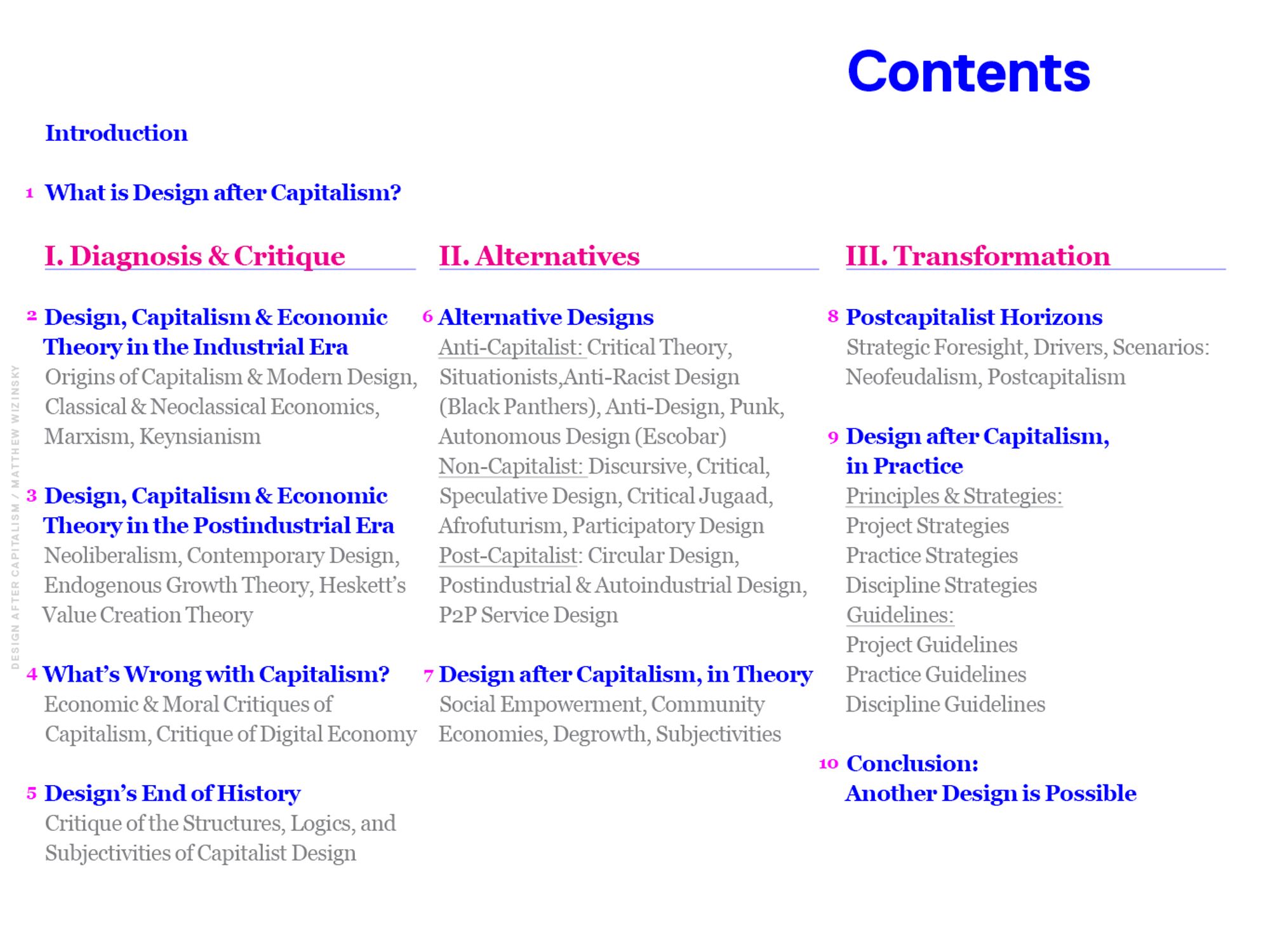
Design after Capitalism
(MIT Press, 2022)
How design can transcend the logics, structures, and subjectivities of capitalism: a framework, theoretical grounding, and practical principles.
The designed things, experiences, and symbols that we use to perceive, understand, and perform our everyday lives are much more than just props. They directly shape how we live. In Design after Capitalism, Matthew Wizinsky argues that the world of industrial capitalism that gave birth to modern design has been dramatically transformed. Design today needs to reorient itself toward deliberate transitions of everyday politics, social relations, and economies. Looking at design through the lens of political economy, Wizinsky calls for the field to transcend the logics, structures, and subjectivities of capitalism—to combine design entrepreneurship with social empowerment in order to facilitate new ways of producing those things, symbols, and experiences that make up everyday life.
After analyzing the parallel histories of capitalism and design, Wizinsky offers some historical examples of anticapitalist, noncapitalist, and postcapitalist models of design practice. These range from the British Arts and Crafts movement of the nineteenth century to contemporary practices of growing furniture or biotextiles and automated forms of production. Drawing on insights from sociology, philosophy, economics, political science, history, environmental and sustainability studies, and critical theory—fields not usually seen as central to design—he lays out core principles for postcapitalist design; offers strategies for applying these principles to the three layers of project, practice, and discipline; and provides a set of practical guidelines for designers to use as a starting point. The work of postcapitalist design can start today, Wizinsky says—with the next project.

The book is organized into three parts:
Introduction
What is Design after Capitalism? In the Introduction and first chapter, I define the goals of the book, motivations, some of the key terms, and layout the plan of the project.
Part I. Diagnosis & Critique
Capitalism is in the midst of two crises: a crisis of productivity and a crisis of legitimacy. Networked digital technologies are now producing free, abundant information goods and services that threaten the basic logics of property, production costs, and value. Meanwhile, escalating global inequality, corporate and political corruption, widespread and rapid destruction of the environment, economic precarity, “bullshit jobs,” and massive accumulation of wealth by a very small number of people have disillusioned a wide spectrum of people. Today, most young people in the United States no longer support capitalism, yet they hold no cohesive vision for an alternative. This means that the future users, clients, and constituents of design—and future designers themselves—have lost faith in “business as usual.” A new political economy and new kinds of design are in the making, so long as they can escape the clutches of a dying system.
Part II. Alternatives
Various anticapitalist, noncapitalist, and even some fragmentary examples of postcapitalist models of design practice have existed throughout history. We can be informed and inspired by these case studies to rethink basic assumptions about how design works, how it produces value, and how its fundamental activities can operate outside the seemingly inescapable logics of capitalism. These case studies, along with theoretical positions from a range of disciplines, provide for a theoretical framework and theory of change for postcapitalist design practices.
Part III. Transformation
The final part begins with an exercise in strategic foresight to put forward two possible futures for design after capitalism—one cautionary and one aspirational. Design practice is argued as being in itself “institution making.” Design practices direct massive flows of investment, labor, technology, and material resources, while normalizing cultural ways of knowing, doing, and being. Untethered from goals of profit maximization, design is capable of massive reorientation. The rationale for an egalitarian postcapitalist design sets the course for a defined set of principles, strategies, and practical guidelines that can be used today to begin the work of transformation.
👉 Home